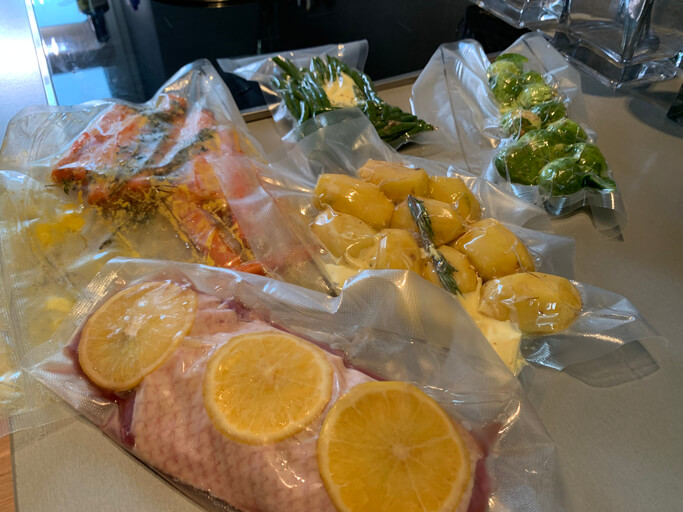One of the biggest drawbacks to using shrinkwrap is that it is not easily recycled. However plastic film materials play a bigger part in sustainability because they protect all sorts of products, from food to pharmaceuticals. There has been a lot of research and development in the packaging industry and modern shrinkwrap film materials have much better environmental credentials. Indeed, there are shrinkwrap options available that are more economical, and others can be made to be recyclable, or contain renewable materials such as sugar cane.
There has been a real push towards sustainability in the supply chain, Many organisations have looked for ways to reduce carbon footprints and opt for greener ways to create products, and this is why many are turning to shrinkwrap for their packaging.
Polyolefin shrinkwrap is an excellent choice for manufacturers and retailers because it can be easily applied to a wide range of items. Most shrinkwrap machines will also apply shrinkwrap without products needing to be handled. Polyolefin is very durable and, if properly applied, can create a sealed environment around products and protects them from contamination.
Shrinkwrap Has Great Protective and Presentation Qualities
Polyolefin is clear, so products can be displayed for the customer to see. It is also printable meaning branding and product information can be displayed, or it can have labelling applied after application. When shrinkwrap is properly applied to products it also helps protect items from dust, dirt, and moisture damage. Certain shrinkwrap materials can also have other protective qualities, such as UV attenuation which can protect from sunlight. Polyolefin can also extend shelf-life and will make sure products reach the customer in their intended condition. If there is an issue during transit then shrinkwrap will show signs of damage or tampering, which gives consumers confidence in the condition of the products inside.
It Works Well On A Production Line
Production lines allow companies to run more efficiently. Automated shrinkwrap machinery can have very high throughput rates, especially when compared to manual packaging systems. Shrinkwrap has the benefit of being able to create a seal around a range of different products, so one packaging system can be applied to items of all shapes and sizes, including those with irregular shapes. Shrinkwrap packaging machinery is reasonably versatile too, although there are solutions that are well-suited to specific tasks. If a company was looking to include shrinkwrap into their production line they should speak to a professional shrinkwrap supplier like Kempner in the United Kingdom.
What Are Companies Doing to Improve Their Packaging?
Companies are beginning to take responsibility for what happens to their product packaging after use. There are huge problems with waste ending up in landfill, so there are big drives in the industry towards reuse and circular models. Unfortunately, it is not always possible to reuse packaging, but recycling is a good option to reduce primary materials needed to make something else. However there are also circumstances when recycling is not an option either, such as if packaging has come into contact with food.
In these circumstances, companies should look to utilise compostable shrinkwrap options that offer a great option for food packaging companies who want to reduce the impact of their packaging. Because food packaging is generally contaminated, cardboard is not a particularly sustainable option for food companies. There are also less obvious challenges with cardboard, such as the volume of packaging and the increased transportation costs due to its weight and bulk.
Information is key. Companies must do their part and opt for more sustainable packing options, but initiatives like the On Pack Recycling Logo or RECOUP are looking to make it easier for consumers to recycle products too.
What Can Consumers Do?
Helping consumers to understand product packaging is a key issue as we work towards sustainability goals. There are publicity campaigns, government initiatives and protest groups looking to promote a greener future. So clearer advice and guidance on the options is needed to help people understand what to do with their packaging. But what can they do if they are unsure?
Bring it to a Collection Centre: Do not just throw your shrink wrap in the bin. There are all sorts of issues with plastic waste, whether in landfill or in natural ecosystems. Some recycling centres will accept mixed waste and process it for you.
Recycle it at Home: If you have some idea about what can be recycled then it is easy to dispose of shrinkwrap in your private recycling bin. Local recycling schemes are promoting recycling so speak to your local council about the options in the area
Compost it: If you buy products from a responsible supplier they may well be using green packaging options. In this case you can just include your shrinkwrap in the compost bin. To do this, shred it first so that it won’t take too long to break down.
Increase Awareness of Sustainability Issues
When companies and consumers have a better understanding of the environmental impacts that they can control, it becomes easier to make sustainable choices. For example, companies can encourage home recycling or composting by changing packaging and promoting this to their customers. As people learn about the environmental issues our world faces they can work toward making a difference, one piece of packaging at a time. The more producers and consumers are involved in this conversation, the better the outcome for all.



































